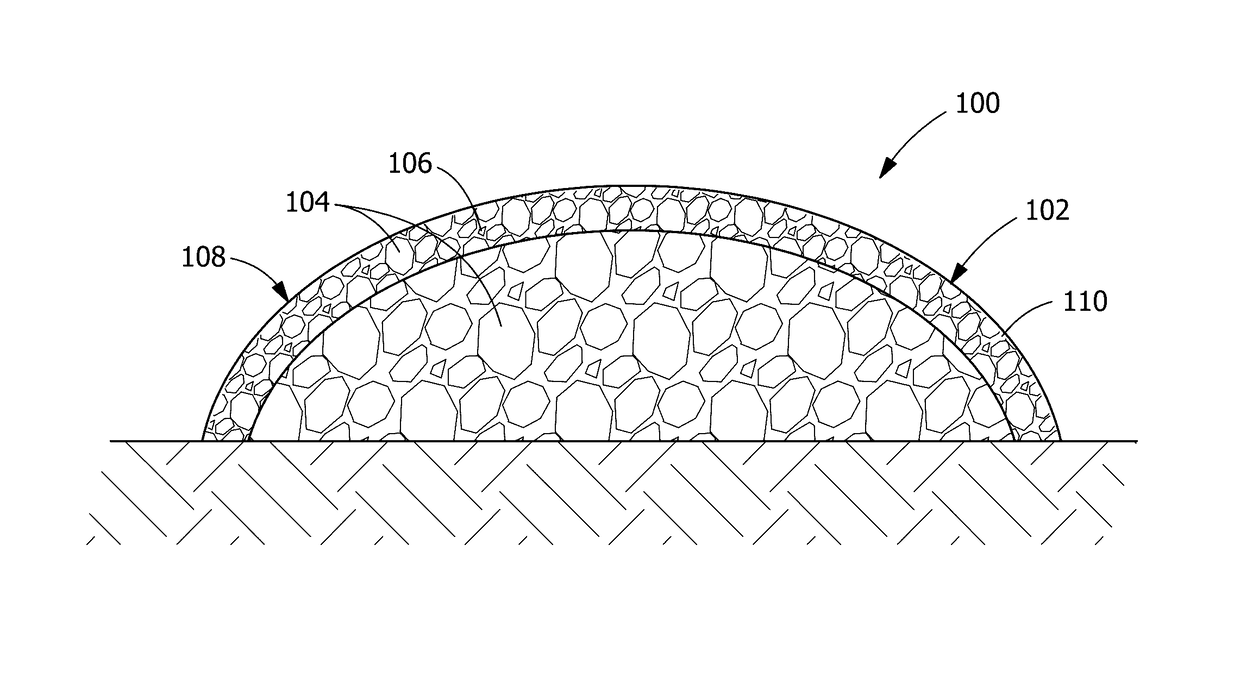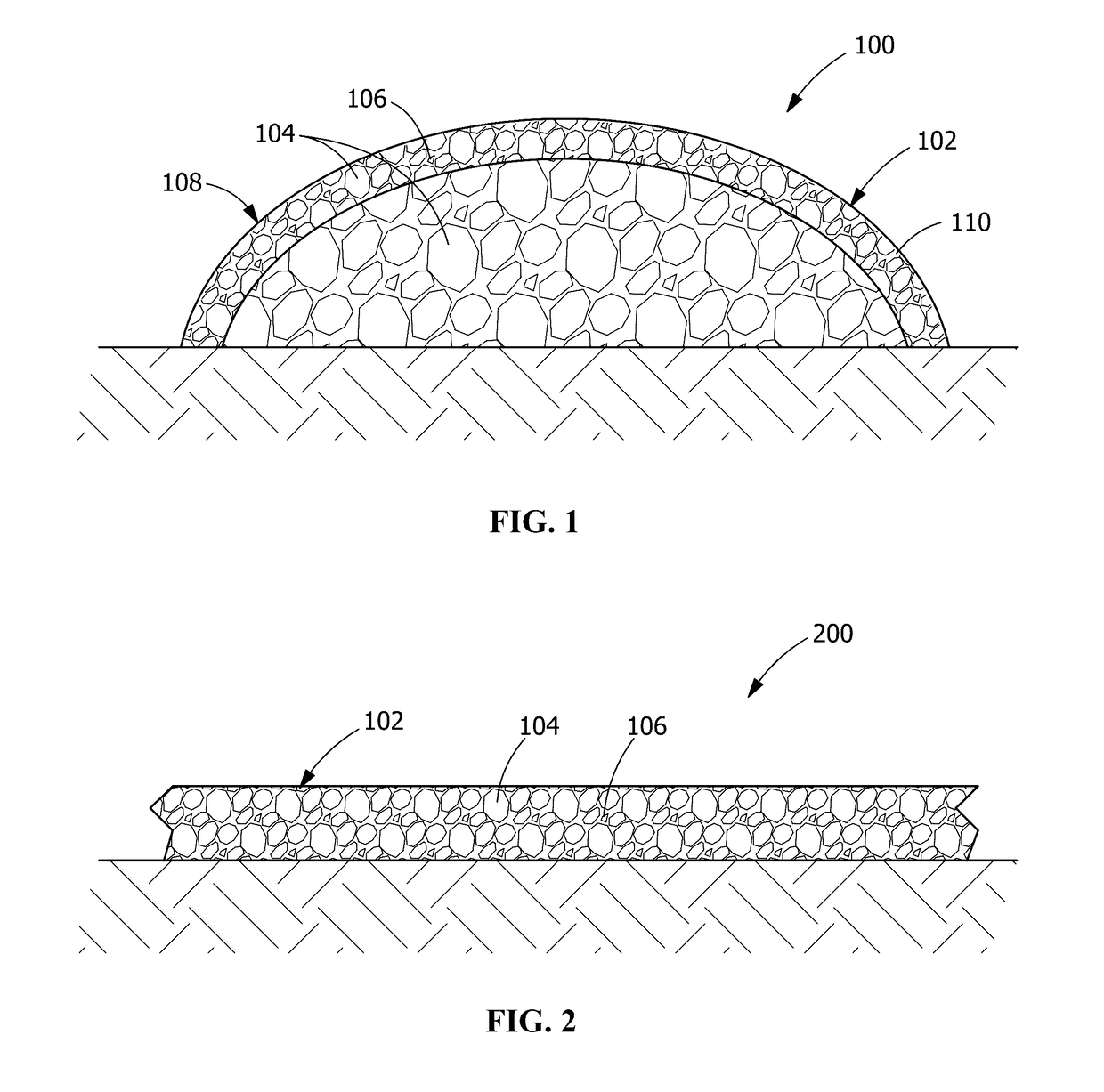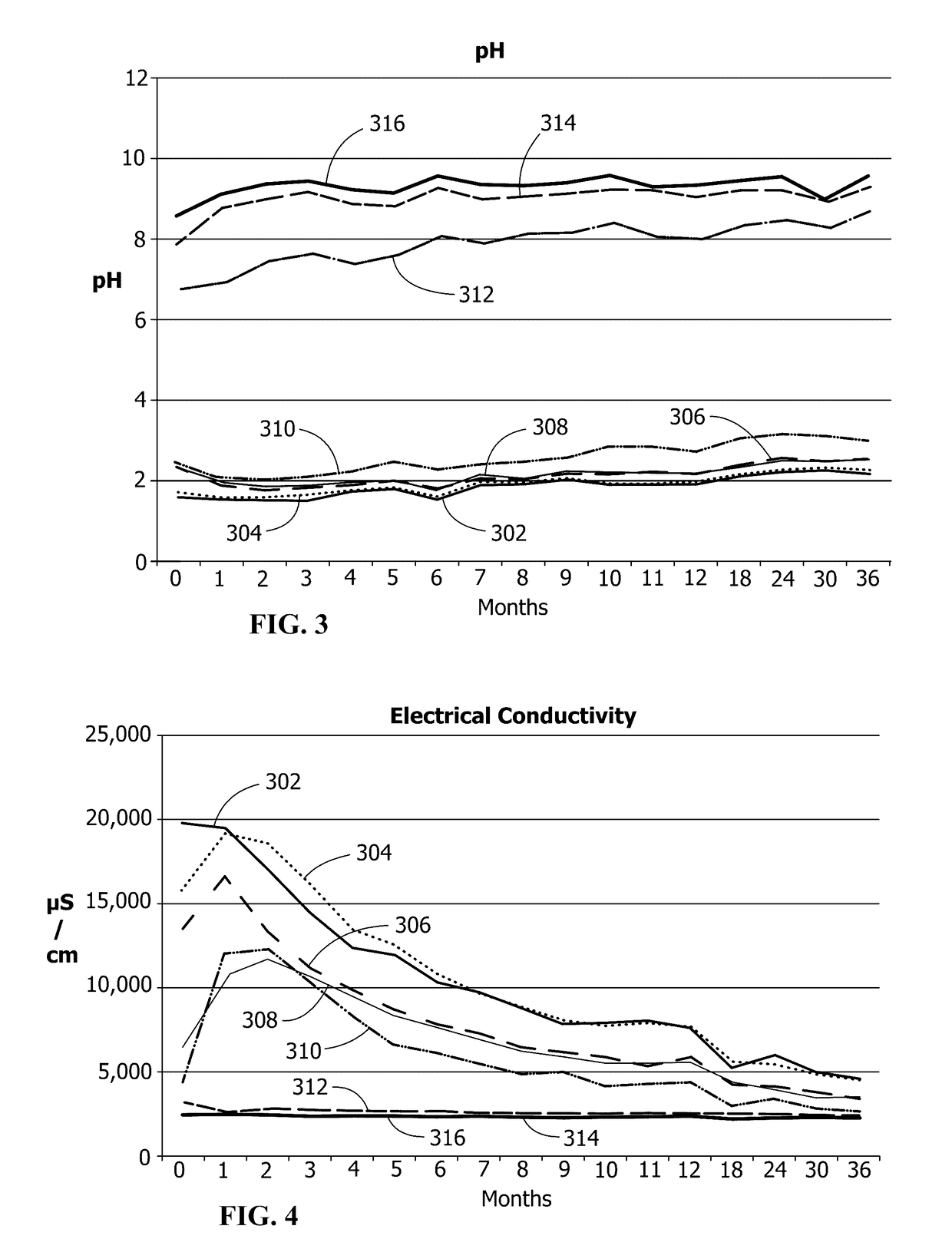Coal refuse horticultural blend
a technology of horticultural blend and coal refuse, which is applied in the field of horticultural blends, can solve the problems of acid drainage entering the ground and/or water sources, affecting the growth of vegetation, and reducing the effect of horticultural growth
- Summary
- Abstract
- Description
- Claims
- Application Information
AI Technical Summary
Benefits of technology
Problems solved by technology
Method used
Image
Examples
examples
[0056]In a first example, a comparative example, a medium having coal refuse is mixed with slag without limiting the coarseness / particle size of the coal refuse and without maintaining consistency of the blending. The coal refuse and the slag form a medium. The pH of the medium is not consistently reproducible, the ability of the medium to neutralize metals is not reproducible, and the results are generally undesirable.
[0057]In a second example through a fourteenth example, various versions of a medium are tested by positioning coal refuse with a coarseness / particle size corresponding with about 40% of the particles in the coal refuse 104 being capable of passing through a standard number 4 sieve. The medium is positioned within a vertically-oriented polyvinyl chloride pipe of about 48 inches in height with about a 4-inch diameter. A fiber cloth is positioned at the bottom of the pipe. Three samples of each example are tested over a period of weeks and / or months for pH, electrical c...
PUM
| Property | Measurement | Unit |
|---|---|---|
| particle size | aaaaa | aaaaa |
| thickness | aaaaa | aaaaa |
| electrical conductivity | aaaaa | aaaaa |
Abstract
Description
Claims
Application Information
 Login to View More
Login to View More - R&D
- Intellectual Property
- Life Sciences
- Materials
- Tech Scout
- Unparalleled Data Quality
- Higher Quality Content
- 60% Fewer Hallucinations
Browse by: Latest US Patents, China's latest patents, Technical Efficacy Thesaurus, Application Domain, Technology Topic, Popular Technical Reports.
© 2025 PatSnap. All rights reserved.Legal|Privacy policy|Modern Slavery Act Transparency Statement|Sitemap|About US| Contact US: help@patsnap.com



